In 1904, Cartier created the first men's wristwatch for pilot Albert Santos-Dumont, who wanted a timepiece he could read without taking his hands off the yoke. A century later, men lust after vintage watches not as objects of practicality (we have cell phones for that), but as wearable history.
Not so long ago, vintage watch collecting was niche. Instagram didn’t exist, and Sotheby’s and Christie’s were the main way that luxury vintage watches were bought or sold. In a pre-eBay world, you might find an old Rolex or Omega at a flea market.
But those days are gone and never to return. Thanks to the Internet, everyone knows what they’ve got. Or, in the words of Paul Altieri, the owner of the top online marketplace for pre-owned Rolexes, Bob’s Watches: “The horse has left the barn.”
Related: 13 Best Men's Luxury Watches of 2023, From Rolex to TAG Heuer
Vintage watches have exploded in popularity around the world. This has been especially true for sports watches from Rolex, Omega, and other iconic Swiss brands. The Internet and social media have transformed vintage watch collecting in a short span of time by providing a way to sell, search, and show off any watch in the world—in an instant.
For anyone just starting out in the hobby of watch collecting, it can seem like a bad time to get in. You get less for your money than you could have a few years ago, so it’s more important than ever to choose wisely. Going vintage now can seem daunting at first—all the jargon and the ever-present worry of being ripped off—but if you go in knowing just what to expect, you'll come out with the watch you've always wanted.
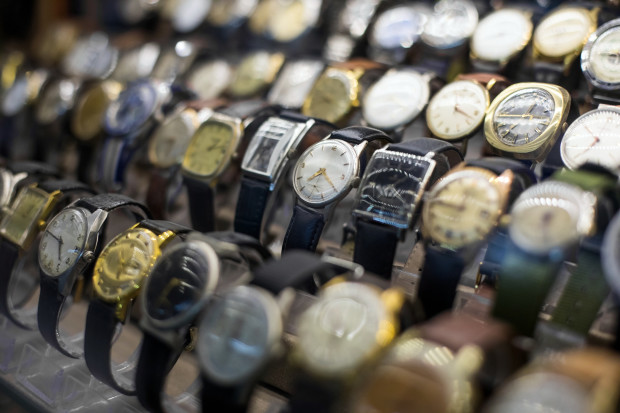
What to Look for When Buying a Vintage Watch
Part of being knowledgable about how to collect vintage watches in 2023 means understanding many things about watches. But before we get into the nitty-gritty of complications, and movements, and tourbillon, it's good to know what dealers look for when they decide whether or not to buy a vintage watch.
1. Check the Condition
“Birth year watches are lame,” says Eric Wind, the former watch buyer for Christie’s auction house who now runs his own online shop, Wind Vintage. “It's better to focus on condition rather than on rarity or year,” says Wind. This is just one of many details that collectors sometimes get fixated on that makes no sense to the pros.
Wind feels the same way about people who are obsessed with having the original paperwork for a vintage watch they buy. "Saying you only want to buy a vintage watch if it has the original box and papers is the equivalent of walking around a high school with a ‘Kick Me’ sign taped to your back—except it says, ‘Rip Me Off.’ ”
Wind also says that a large percentage of the papers he sees tied to vintage Rolex watches aren’t even real. “They're either outright fake papers or unfilled papers that someone purchased and filled out to match the watch,” says Wind, who dispenses his vintage watch wisdom in lectures to the Horological Society of New York. Wind refers to Instagram as “the best and worst thing to happen to watch collecting.”
Another tip he offers is to take a picture of the serial number on your watch as soon as you buy it. Rolex, for example, keeps a record of the serial numbers of any stolen Rolexes, and there are stories of people who’ve had their stolen watches returned to them many years later after their watch was sent into a Rolex service center and flagged as stolen. Wind’s biggest piece of advice is to only buy a watch from a trusted source.
Related: 11 Insanely Luxurious Villas You Can Rent Today
2. Favor the History
Paul Altieri has owned Bob’s Watches since 2010, so he’s witnessed first-hand how crazy the market has gotten over the past decade. For Altieri, a vintage watch is a personal purchase that should be about more than investment value, even though he admits that vintage watches have been a “very good place” to put your money since he’s been in the business. “The story behind it is what appeals to me,” he says, pausing briefly to muse. “Like the engineer who graduated in 1948 and used to own it.”
Altieri’s passion for Rolex was sparked when he was a 14-year-old caddy at a Rhode Island golf club. The men he carried clubs for wore Rolex watches. “I respected and admired them,” says Altieri, “And I thought, ‘Someday if I make it, I’m gonna buy myself a Rolex.’ ”
Altieri now has one of the best vintage Rolex collections in the world and says that a Rolex is the “first thing he puts on and the last thing he takes off” every day.
He bought his first Rolex in his 20s, and it was a 1970’s Sea Dweller that he bought from a seller in Jamaica. One of the fundamentals of Bob’s Watches is that they buy directly from owners, which preserves the stories behind the watches that he so values. Nearly everything in their inventory was acquired in this manner, rather than from other dealers.
He tells a story recently of buying a Paul Newman Rolex Daytona from a man who, for 20 years, draped it over his towel that was hung on a hook every day he went swimming. The man had no clue his watch was the value of a house.
Related: Italy’s Amalfi Coast: 4-Day Weekend Travel Guide
3. Go With Your Gut (and Heart)
Altieri’s first big piece of advice is to buy what you love, “because the joy of seeing it on your wrist exceeds any investment potential, in my humble opinion.” When he gets a lead on a watch he wants to buy, like the Newman Rolex, even he pays the current retail value for it.
After buying what you love, he recommends buying only period-correct examples from a reputable dealer that sources watches from their original owners. He urges buyers to avoid buying from watch forums, third-party sites like eBay, or from fashion reseller sites.
The biggest surprise for buyers (other than rising prices) is the importance of the dial for watch value.
“When I tell a collector that 85 percent of the value of the watch is derived from the dial, that garners the biggest surprise,” he says. That can mean a pristine dial hidden behind a destroyed crystal could make it worth more than expected, or a perfectly faded or patinated dial craved by collectors could drive up the value.
4. Do Your Homework
Saori Omura is a vintage buyer for the online watch magazine and marketplace Hodinkee. To Omura, the “hunt” is the most exciting part of buying a vintage watch, because the sheer variety you find on the used and vintage marketplace is much more vast than anything you’d find in a retail store selling only modern timepieces. The hunt can be a great way to get to know your likes and dislikes, and to learn more about watches in general.
“The biggest mistake a first-time buyer can make is purchasing a vintage piece without doing their homework,” she says, pointing out that it’s easy to do when you get caught up in the excitement of owning your first vintage watch and want instant gratification. Omura recommends leaning on a “trusted source with ample experience” to act as a “sherpa” to help you through the process.
She recommends that buyers focus primarily on the condition of a watch, as that will most affect the value if you want to sell it down the road. She also suggests avoiding aftermarket add-ons like bejeweled elements that are not original to the watch, as they can diminish the value.
As a part of doing your buyer’s homework, Omura recommends that buyers keep an eye on the watch market to see how it’s moving and track how the prices are shifting. Also, dipping a toe in the watch community through forums can be a good way to learn from more experienced collectors.
But above all, Omura believes that watch collecting should bring you joy. “There is no real joy in owning a watch that doesn’t speak to you.”
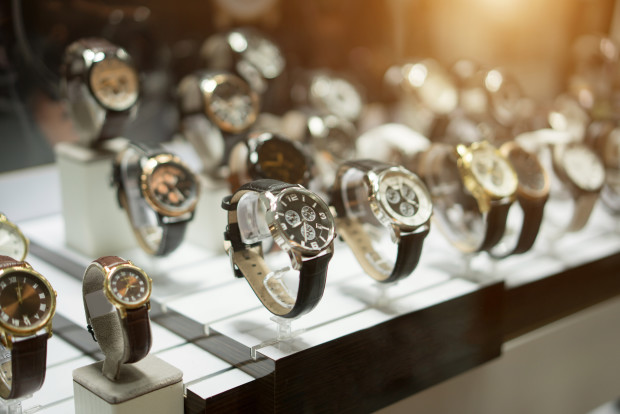
What to Know About Vintage Watches Before You Buy
1. Know Your Movement
Learn about the various vintage movements before searching for the perfect well-loved watch. A beautiful watch movement is engineered art—and like art, some examples are more prized than others.
Among pre-1969 watches, the manually wound Valjoux 72 reigns. As the first modular movement—watchmakers could swap in their own parts to make it unique—it was used in such classics as the Heuer Carrera and the so-called Rolex Pre-Daytona.
Other watch companies rolled their own movements: Omega Caliber 321, Longines 13ZN, and Breguet Flyback all make vintage collectors' hearts flutter. In 1969, a group including Heuer, Breitling, and Hamilton co-created the first automatic chronograph movement (dubbed "Chronomatic" by Hamilton and Breitling; "Caliber 11" by Heuer). That same year, Zenith debuted its own auto-chrono, the El Primero.
All of these movements are both precise and highly desirable.
2. Understand Complications
At its most basic, a watch's movement tracks the passage of hours, minutes, and seconds. The most impressive watches, though, include complications. There are the standards—your date display and chronograph (stopwatch function), and so forth. And then there are these three, each a triumph of engineering, with complexity that elicits lust and awe in those who know watches.
Minute Repeater
Prior to the 17th century, once the sun went down and the candles were snuffed, telling time became guesswork. Then, pocket watches with minute repeaters appeared. Their movements integrated tiny hammers and gongs that sounded different tones for the hour, quarter-hour, and minutes to ring in the exact time. They fell out of favor when matches were invented in the 19th century.
Perpetual Calendar
This is the Will Hunting of mechanical calendars, able to account for the differing lengths of months, and even leap years, too. As a result, most perpetual calendar watches display not only the date and month, but also the day of the week, the year, and the moon phase. The movement needs to be set only three times every 400 years—or once in your lifetime at most, if you're lucky enough to own one.
Tourbillon
By housing the balance wheel and escapement in a rotating cage, this incredibly intricate complication compensates for the negative interference of gravity on a mechanical movement. Invented in 1795 by Breguet, it was implemented sparingly through the 1940s, then became popular starting in the mid-80s as luxury watchmakers sought to show off their mastery.
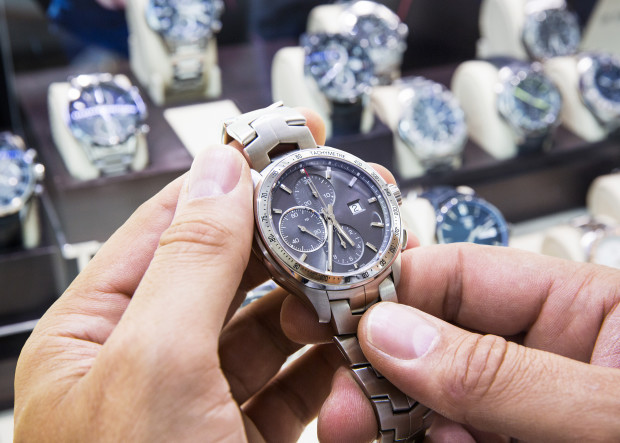
What to Ask About Vintage Watches Before You Buy
Nathaniel Borgelt, horological coordinator at Patrizzi & Co. auction house, feeds you the questions you need to gauge a vintage watch's worthiness.
- Is it signed? The case, crown, dial, and movement should bear the company logo. Replacements lower the value, though a new crown is the least concerning.
- Was the dial fixed? Even if it's original, sellers may reapply the luminescent substance to the markers to make it look better. That drops the value.
- Was the case polished? Bad. Too much polishing removes and weakens metal.
- Does the watch have provenance? Engravings that hint at a watch's use (particularly military) or an interesting backstory make any watch more valuable.
- Does it come with any original accessories? Ideally it comes with the box, papers, and service records—but it's rare to get all three.
Where to Buy Vintage Watches
Half the thrill of buying a vintage watch is finding a deal. Here's how.
The Best Vintage Watch Dealers
Dedicated watch dealers include Robert Maron Important Wristwatches (L.A. area), Matthew Bain Inc. (Miami Beach), and Aaron Faber Gallery (New York City).
- Pros: Dealers have knowledgeable staffs and established networks for tracking down that rare Omega you've always wanted. And they will usually accept watch trade-ins.
- Cons: Not many deals to be had. You'll almost always end up paying the retail price, which is inevitably more than what the same watch would sell for at an auction or on an online forum.
The Best Auction Houses to Buy Vintage Watches
Well-established operations include Antiquorum, Sotheby's, and Patrizzi & Co.
- Pros: You've got the best chance of finding a rare watch at a low price at auction, as long as demand isn't high. And you'll get some time to handle the watch.
- Cons: Going to auctions can be a time suck. You'll get to handle the watch only for a short while, and there's no guarantee you'll win the one you want.
The Best Online Sites to Buy Vintage Watches
Bustling watch-nerd forums include chrono24.com, vintagerolexforum.com, and watchuseek.com.
- Pros: If you take the time to be part of the forum community, you'll know who you're buying from. Prices are generally lowest—though avoid scam-filled eBay.
- Cons: You won't get to hold the watch at all before buying. Also, while most offer a refund if you're unhappy, there's not much recourse if you get screwed.
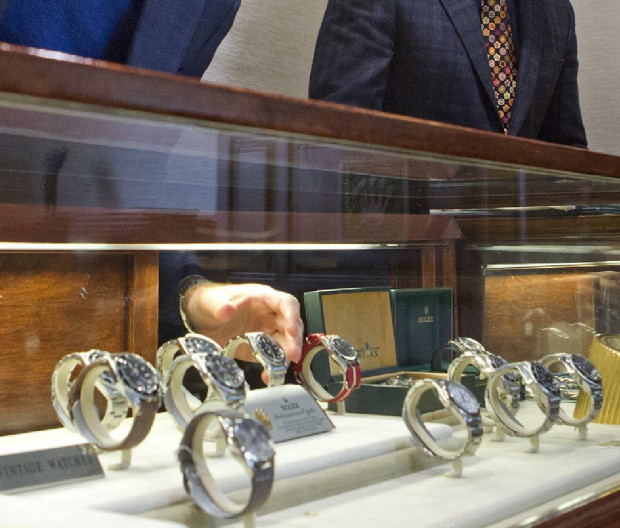
Imago
Why Swiss Watches Are So Famous
Switzerland's rise as the epicenter of watchmaking is part skill, part luck. In 1541, Geneva outlawed jewelry on religious grounds, forcing jewelers in the city to take up the nascent art of watchmaking. Many outfits rose to prominence, particularly Abraham-Louis Breguet and Perrelet, who made watches for French royalty.
Fast-forward to the World War I era: While foreign competitors had their watchmaking factories seized by governments or bombed to rubble, factories in neutral Switzerland stayed safe. Now, the Swiss account for half of the world's watch production by value, and the Geneva seal—awarded only to the highest-quality mechanical timepieces—is the gold standard by which a watch is judged.
Best Non-Swiss Watchmakers
Because the Swiss can't make all the good watches, we offer up some worthy outsiders:
Lange & Söhne (Germany)
Founded in 1845, Lange & Söhne shut down in 1948, then reopened in 1990, it makes pieces that are compared to Patek.
Noteworthy timepiece: Lange 1
Sturmanskie (Russia)
Despite claims to the contrary, Yuri Gagarin's 1961 Sturmanskie was the first watch in space.
Noteworthy timepiece: Strela Chronograph
Hamilton (United States)
Hamilton's watches were worn by GIs in World War II. Allegedly, Elvis also loved the 128-year-old Pennsylvania company's timepieces.
Noteworthy timepiece: Ventura
Vintage Variations to Look for in a Rolex Submariner
When Rolex unveiled the Submariner in 1954 as the first wristwatch designed to withstand extreme depths, few realized it would become a classic. Since then, Rolex has issued 11 references—watch-speak for individual versions of a particular model—some far more valuable than others. The smallest details distinguish a $5,000 Submariner from a $30,000 one. Here's what to keep an eye out for.
1. Gilt Dial
On gilt-faced Submariners (Ref. 5512 and 5513 models), the Rolex crown and writing is colored gold, making them some of the rarest versions of the model available. Look out for fakes; no Ref. 1680 Submariners were ever made with a gilt dial.
2. Red "Submariner"
The Ref. 1680 model was made for more than 30 years, but it wore only a red Submariner label on the face for the first five. Around 1973 Rolex switched to white type for the name.
3. Original Bezel
When a Submariner is given to Rolex for maintenance, the bezel is typically replaced. Collectors much prefer an original bezel, which has thicker numerals than modern bezels.
4. Date Window
This handy complication, which first showed in 1969 with the Ref. 1680 model, adds value. If you're holding a Submariner from before then and it has a date window, then you've found yourself a genuine Faux-lex.
5. Meters-First Depth Rating
Some earlier Submariners have meters printed before feet on the depth rating, which makes them more rare.
6. Chronometer Rating
A chronometer is a watch certified as accurate to within roughly five seconds a day, adding to its value.
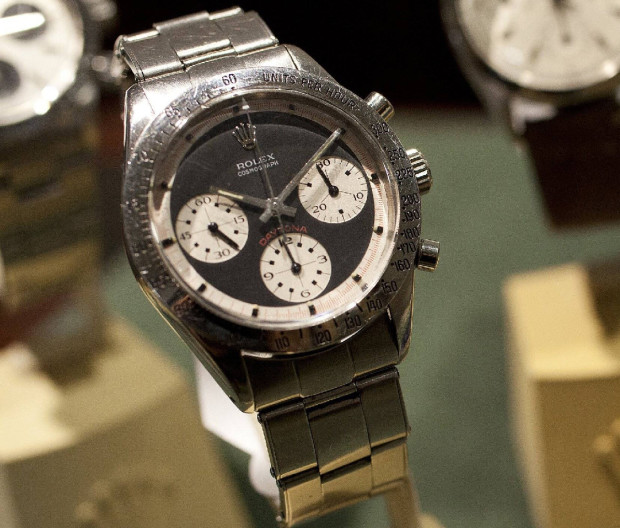
Imago
The Rarest Vintage Watches
Rolex Paul Newman Daytona Ref. 6263
Daytonas with exotic dials were unofficially named for the late actor after he wore one on the cover of an Italian magazine. "There are rarer versions, but the 6263 with the 'Panda' dial is one of my favorites," says Charles Tearle, Sotheby's Head of Watches, Asia.
Value: $80,000
Patek Philippe Ref. 1518 in Steel
"The 1518 was made in steel only during an embargo on gold in 1940, and even then only for the Italian market," explains Tearle. "It was also the first perpetual calendar chronograph wristwatch ever available to the public." Only four exist.
Value: $1,000,000
1960s Jaeger Lecoultre Polaris
According to Tearle: "Fewer than 1,500 examples were ever made, and few have survived, likely because the Polaris is an underwater alarm watch." It has 16 holes in the back cover that allow the dining alarm chime to ring loudly.
Value: $15,000
1950s Breguet Type XX
"Type XX was originally made for the French military and was later made available to the consumer market at the same time. It's just a great-looking, masculine-but-simple chronograph from a great manufacturer."
Value: ~$12,000 (depending on variations)
Omega Speedmaster Ref. 2298
It's not rare, but it is historical. "In 1969, Speedmaster was the first watch to reach the moon, but the 2298 went to space seven years earlier when astronaut Walter Schirra wore his own during the Sigma 7 flight."
Value: $10,000
How to Keep a Vintage Watch in Good Condition
Want to protect your investment? Here's how.
- Clean it: A tune-up from a trusted company like Central Watch every three years preserves precision. Keep the service papers in case you sell the watch.
- Hide it away: Store your watch in a dark drawer or closet to protect the dial, hands, and markers from fading caused by sunlight.
- Keep it alive: When not wearing an automatic watch, put it on a watch winder so the movement stays alive. Try a model from SwissKubik.
from Men's Journal https://ift.tt/3wGea0j
No comments:
Post a Comment